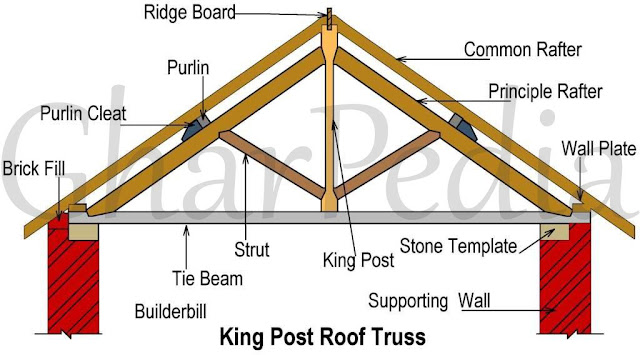An In-Depth Guide to Understanding King Post Truss Design and Function
When it comes to building structures like bridges, roofs, and even homes, trusses are essential. Trusses provide structural support and distribute weight evenly, making them crucial to the stability and longevity of a building. One of the most common types of truss designs is the king post truss. In this article, we'll take a closer look at what king post trusses are, how they work, and why they're so popular.
What is a King Post Truss? A king post truss is a type of roof truss that features a central vertical post or "king post" that supports the weight of the truss's ridge beam. The ridge beam is the horizontal beam that runs along the top of the truss and supports the weight of the roof. The king post is typically a vertical beam that sits in the center of the truss, extending from the bottom of the truss to the top, where it connects to the ridge beam.
King post trusses are often used in smaller structures like garages, sheds, and houses. They are also commonly used in bridges and other structures that require a strong, stable support system.
How Does a King Post Truss Work? A king post truss works by evenly distributing the weight of the roof and any other loads on the structure to the supporting walls or columns. The king post truss accomplishes this by using a series of angled beams, known as rafters, to transfer the weight of the roof to the supporting walls or columns.
The king post truss is made up of several components, including the king post, the ridge beam, the rafters, and the struts. The king post provides vertical support for the ridge beam, which in turn supports the rafters. The rafters are angled beams that extend from the ridge beam to the supporting walls or columns. The struts are diagonal beams that connect the king post to the bottom of the rafter, providing additional support and stability to the truss.
King post trusses are designed to be strong, stable, and efficient. By using a central king post and a series of diagonal struts, the truss is able to evenly distribute the weight of the roof and other loads to the supporting walls or columns. This makes the truss an excellent choice for smaller structures and bridges where a strong, reliable support system is needed.
Advantages of King Post Trusses: There are several advantages to using king post trusses in construction. One of the main advantages is their versatility. King post trusses can be used in a wide range of structures, from small garages and sheds to large bridges and commercial buildings. They are also relatively simple to construct and require minimal maintenance, making them an excellent choice for both residential and commercial construction projects.
Another advantage of king post trusses is their strength and stability. By using a central king post and a series of diagonal struts, the truss is able to evenly distribute the weight of the roof and other loads to the supporting walls or columns. This makes the truss an excellent choice for areas with heavy snow loads or high winds, as it can withstand the added stress and strain.
Finally, king post trusses are also cost-effective. Because they are relatively simple to construct and require minimal maintenance, they are often less expensive than other types of truss designs. This makes them an excellent choice for budget-conscious builders and contractors.
Disadvantages of King Post Trusses: While there are many advantages to using king post trusses, there are also some disadvantages to consider. One of the main disadvantages is their limited span. Because king post trusses rely on a central vertical post for support, they are not ideal for structures with long spans. This can limit their use in larger buildings and bridges, where longer spans may be required.
Another potential disadvantage of king post trusses is their aesthetic appeal. Some architects and builders may prefer more elaborate or decorative truss designs, and the simple design of the king post truss may not fit their desired aesthetic.
Finally, king post trusses may not be suitable for certain types of roofs, such as those with complex shapes or designs. In these cases, other types of truss designs may be more appropriate.
Conclusion: In conclusion, king post trusses are an essential component of many different types of structures. Their simple design, strength, and versatility make them an excellent choice for a wide range of residential and commercial construction projects. While they do have some limitations, such as their limited span and simple aesthetic, these can often be mitigated by careful planning and design. If you are planning a construction project and are considering using a king post truss, be sure to consult with a qualified engineer or architect to ensure that the truss design meets the specific requirements of your project.




Comments
Post a Comment